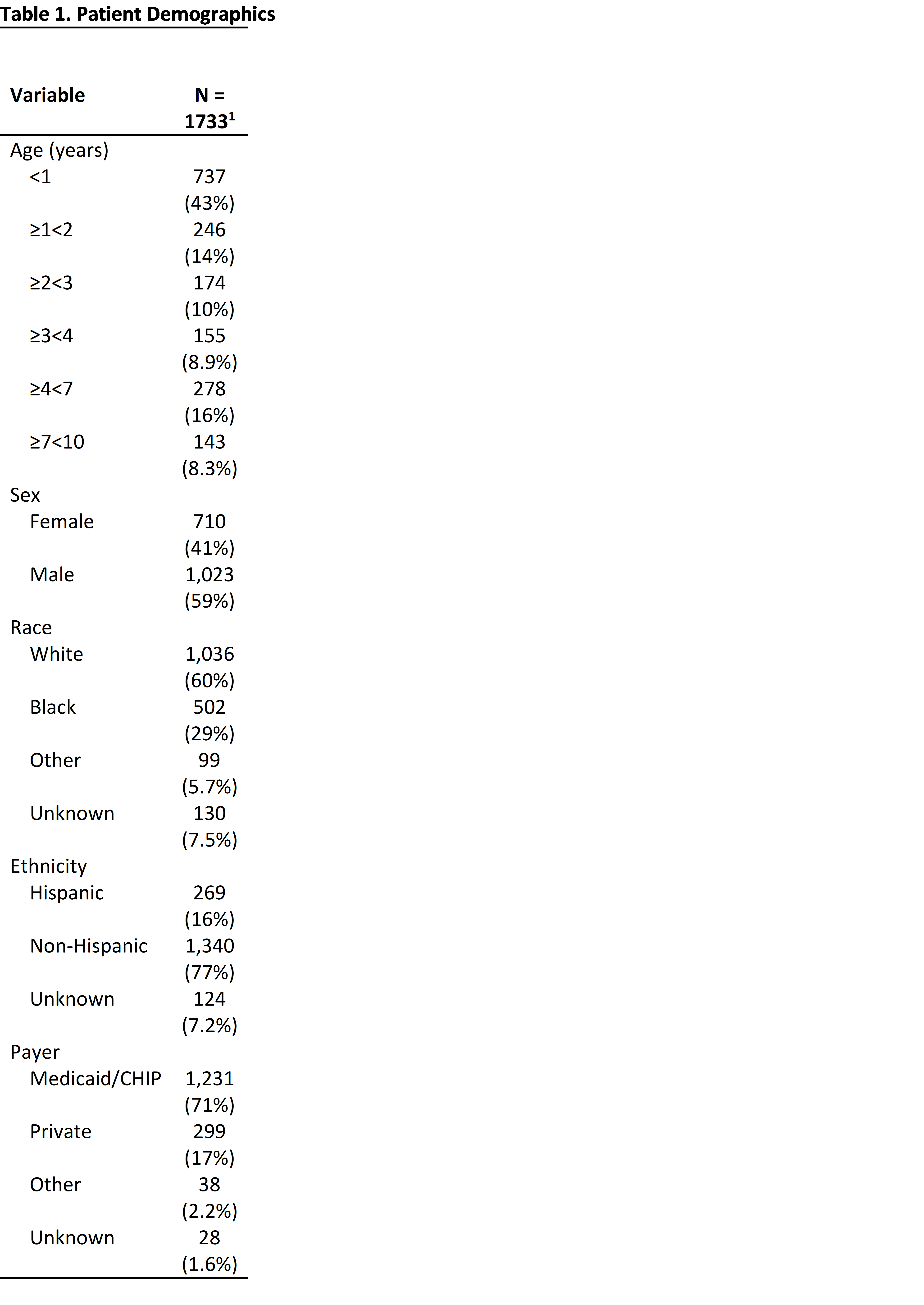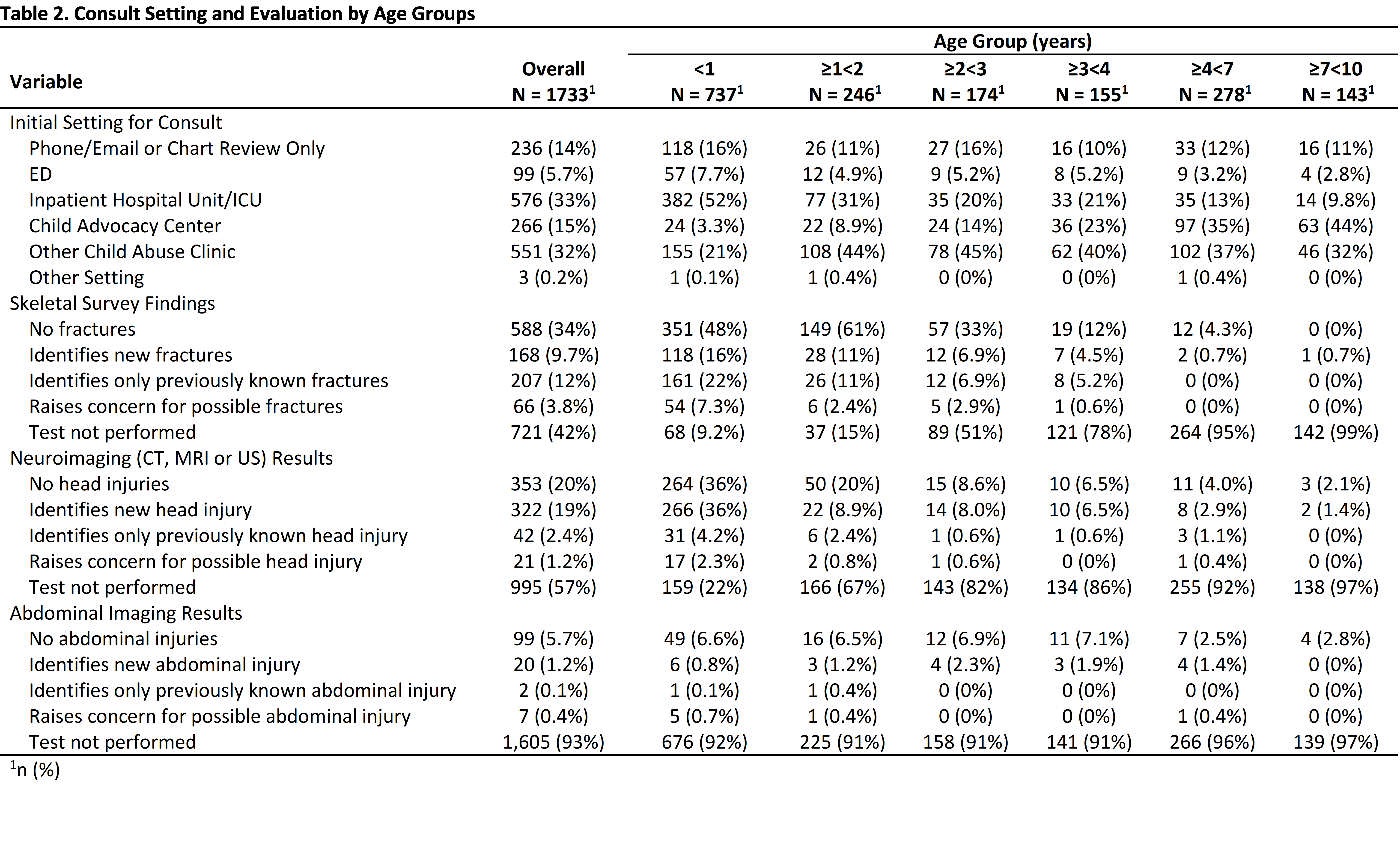Child Abuse & Neglect
Category: Abstract Submission
Child Abuse & Neglect I
220 - Epidemiology of a Child Abuse Pediatrics Research Network: The CAPNET Core Data Project
Monday, April 25, 2022
3:30 PM - 6:00 PM US MT
Poster Number: 220
Publication Number: 220.401
Publication Number: 220.401
Joanne Wood, The Children's Hospital of Philadelphia (CHOP) - - Philadelphia, PA, Philadelphia, PA, United States; Kristine A. Campbell, University of Utah School of Medicine, Salt Lake City, UT, United States; Rachel Berger, UPMC Childrens Hospital of Pittsburgh, Pittsburgh, PA, United States; Kent Hymel, Pennsylvania State University College of Medicine, Mechanicsburg, PA, United States; Angela N. Bachim, Baylor College of Medicine, Houston, TX, United States; James Anderst, Children's Mercy Hospital, KANSAS CITY, MO, United States; Megan M. Letson, Nationwide Children's Hospital, Columbus, OH, United States; JOHN D. MELVILLE, Medical University of South Carolina - - Chaleston, SC, Chaleston, SC, United States; Daniel Lindberg, University of Colorado School of Medicine, Denver, CO, United States
.jpg)
Joanne N. Wood, MD, MSHP (she/her/hers)
Associate Professor
Childrens Hospital of Philadelphia
Philadelphia, Pennsylvania, United States
Presenting Author(s)
Background: Relevant, reliable research in child physical abuse has faced significant barriers, including low numbers of patients in any single center, wide variability in patient presentations and lack of uniform data measures. CAPNET, a multicenter child abuse pediatrics research network, was developed to provide the infrastructure to collect multicenter data using uniform definitions and to improve scientific discovery and clinical outcomes.
Objective: Examine the epidemiology of physical abuse evaluations performed by Child Abuse Pediatricians (CAPs) within CAPNET, a multicenter child abuse pediatrics research network.
Design/Methods: We conducted a cross-sectional study of children < 10 years old who underwent an evaluation (in-person or phone/chart review) by a CAP due to concerns for physical abuse at nine CAPNET hospital systems from February 2021 through July 2021.
Results: Among 1733 included patient encounters, 76% were < 4 years old; 43% < 1 year old, 59% male; 60% White, 29% Black; 16% Hispanic; and 71% had public insurance. The highest level of care was outpatient or emergency department in 60%, inpatient unit in 30% and intensive care in 10%. CAPs performed in-person consultation in 86% and phone or chart review in 14%. Overall, the most diagnosed injuries were bruises (35%), fractures (29%), and traumatic brain injuries (TBI) (16%). Burns (3.9%), abdominal injuries (1.3%) and spine injuries (1.2%) were uncommon. TBI was diagnosed in 30% of infants < 1 year but only 7.7% of 1-year old children. In 74% of cases a report to child protective services (CPS) was made prior to CAP consultation; in 9.5% a report was made after CAP consultation. CAPs reported no concern for abuse in 43% of cases and mild or intermediate concern in 22%. Only 13% were categorized as definite abuse. The majority (81%) of patients did not have any anticipated disability associated with their injury, but 12% had a new transient disability and 2.2% were predicted to suffer long-term disability at the close of the CAPNET episode. Mortality occurred in 1.2% of cases.Conclusion(s): CAPNET is a new research resource that provides data about a large cohort of children evaluated for concerns of physical abuse. Most included children were infants and toddlers with bruises, fractures or intracranial injuries. Reports to CPS were frequently made prior to CAP consultation, and CAPs had a low level of concern for abuse in over half of cases.
Table 1. Patient Demographics
Table 2. Consult Setting and Evaluation by Age Groups
Objective: Examine the epidemiology of physical abuse evaluations performed by Child Abuse Pediatricians (CAPs) within CAPNET, a multicenter child abuse pediatrics research network.
Design/Methods: We conducted a cross-sectional study of children < 10 years old who underwent an evaluation (in-person or phone/chart review) by a CAP due to concerns for physical abuse at nine CAPNET hospital systems from February 2021 through July 2021.
Results: Among 1733 included patient encounters, 76% were < 4 years old; 43% < 1 year old, 59% male; 60% White, 29% Black; 16% Hispanic; and 71% had public insurance. The highest level of care was outpatient or emergency department in 60%, inpatient unit in 30% and intensive care in 10%. CAPs performed in-person consultation in 86% and phone or chart review in 14%. Overall, the most diagnosed injuries were bruises (35%), fractures (29%), and traumatic brain injuries (TBI) (16%). Burns (3.9%), abdominal injuries (1.3%) and spine injuries (1.2%) were uncommon. TBI was diagnosed in 30% of infants < 1 year but only 7.7% of 1-year old children. In 74% of cases a report to child protective services (CPS) was made prior to CAP consultation; in 9.5% a report was made after CAP consultation. CAPs reported no concern for abuse in 43% of cases and mild or intermediate concern in 22%. Only 13% were categorized as definite abuse. The majority (81%) of patients did not have any anticipated disability associated with their injury, but 12% had a new transient disability and 2.2% were predicted to suffer long-term disability at the close of the CAPNET episode. Mortality occurred in 1.2% of cases.Conclusion(s): CAPNET is a new research resource that provides data about a large cohort of children evaluated for concerns of physical abuse. Most included children were infants and toddlers with bruises, fractures or intracranial injuries. Reports to CPS were frequently made prior to CAP consultation, and CAPs had a low level of concern for abuse in over half of cases.
Table 1. Patient Demographics

Table 2. Consult Setting and Evaluation by Age Groups

